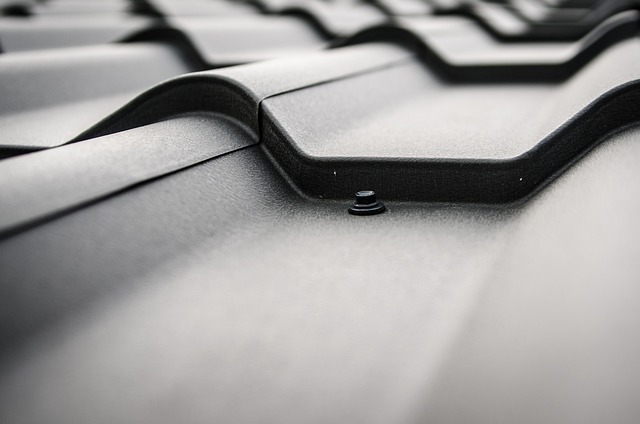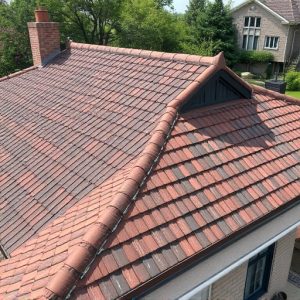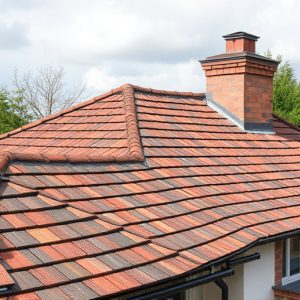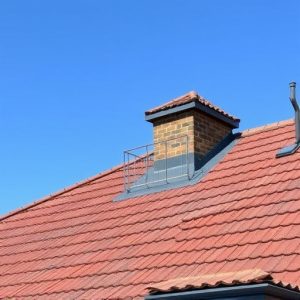10 Key Tips for Winter Roof Maintenance and Insulation
During winter, it's crucial for homeowners to manage snow and ice on roofs to maintain structu…….

During winter, it's crucial for homeowners to manage snow and ice on roofs to maintain structural integrity and safety. Regular monitoring of snow accumulation is necessary due to its heavy weight, which can cause significant damage or leaks if not managed properly. Homeowners should use tools like roof rakes for safe snow removal and consider installing heated cables or snow-melting systems to prevent ice dams. Proper attic insulation and ventilation are essential to regulate temperatures and prevent heat from causing snow to melt and refreeze, which can lead to water intrusion and structural issues. Insulating the roof with materials that meet local building codes and ensuring good air circulation through ridge or soffit vents can help prevent ice dams and extend the life of the roof. Gutters must be kept clear of debris to allow melted snow to drain effectively, preventing water backups under the roofing material. Selecting durable roofing materials that are suitable for the local climate is important, as they can withstand the harsh conditions of winter. Synthetic underlayments with waterproofing properties and materials resistant to ice can provide additional protection. Homeowners should conduct pre-winter inspections, looking for signs of wear or damage on shingles, flashing, and critical junctures. Regular maintenance, such as clearing gutters and downspouts before the onset of winter, is vital to prevent water damage from blocked systems. For optimal protection and to make informed decisions about roofing materials, consulting with a professional roofer who can assess specific climate needs and home structure is recommended.
As winter’s chill descends, safeguarding your home against its elements is paramount. This article delves into 10 essential tips for winter roof maintenance, a critical aspect of preserving the integrity of your roofing system amidst snow and ice. From assessing potential buildup to ensuring optimal insulation and ventilation, this guide offers practical strategies for preventing damage from ice dams and water intrusion. Learn how to clear gutters, select appropriate materials for cold resistance, implement effective snow removal plans, and monitor temperature changes to keep your roof in top condition. Additionally, understand the significance of professional care during these months. With these tips, your roof will withstand winter’s test, maintaining its functionality and your home’s safety.
- Assessing Snow and Ice Buildup on Your Roof
- Preventing Ice Dams with Effective Insulation Strategies
- Ensuring Proper Ventilation to Protect Your Roof from Winter Conditions
- Conducting a Thorough Roofing Inspection Before the Cold Sets In
- Clearing Gutters and Downspouts to Avoid Water Damage
- Using Roofing Materials Suited for Cold Weather Conditions
Assessing Snow and Ice Buildup on Your Roof

When winter’s chill sets in, snow and ice accumulation on your roof becomes a critical concern for maintaining its integrity and ensuring safety. As snowfall occurs, it’s imperative to assess the buildup regularly. Excessive snow or ice can exert significant pressure on your roofing system, potentially leading to structural compromise or leaks that may cause damage both within the home and to the roofing material itself. The weight of accumulated snow can be staggering; depending on the type of roof you have, it might not be designed to support such loads. This is where proactive monitoring comes into play. Homeowners should familiarize themselves with the contours of their roof to better gauge how much snow has settled in, and use tools like a roof rake—a long-handled tool designed for clearing snow from a roof’s surface without the need to climb up. Additionally, installing heated cables or a snow-melting system can help prevent ice dams and further protect your roofing structure. Keep an eye on forecasts for significant snow events, and be ready to address any issues that arise promptly. Regular inspections of your gutters are also advisable, as clear pathways ensure melting snow can flow off the roof rather than backing up under the roofing material and causing water intrusion. By taking these precautions, you can safeguard your home against the challenges winter weather brings to your roofing system.
Preventing Ice Dams with Effective Insulation Strategies

When winter’s chill sets in, homeowners must be vigilant to prevent ice dams from forming on their roofs. Ice dams occur when snow on the roof melts and refreezes at the edge, creating a dam that can back up water under the shingles, leading to leaks and potential damage. Effective insulation strategies are crucial in mitigating this issue. Proper attic insulation plays a pivotal role; it ensures that your home’s interior temperature does not excessively warm the roof deck, which would cause snow above it to melt and refreeze at lower roof sections as ice dams. Adequate levels of insulation, typically an R-value recommended by local building codes, should be installed to maintain consistent attic temperatures and reduce heat loss or gain. Additionally, ensuring your home has a well-ventilated attic space is key; this allows for the exchange of warm, moist air that can lead to snowmelt with cooler outside air, thereby reducing the likelihood of ice dam formation. Roofing materials matters too; reflective roofing can significantly reduce heat absorption, and ridge vents or soffit vents can facilitate air circulation. By addressing insulation and ventilation, homeowners can protect their roofs from the damaging effects of ice dams and maintain the integrity of their homes throughout the winter season. Implementing these measures not only extends the lifespan of your roof but also safeguards your residence against water intrusion and the associated damages.
Ensuring Proper Ventilation to Protect Your Roof from Winter Conditions

During winter, proper roof ventilation plays a pivotal role in safeguarding your roof from the harsh conditions that typically accompany the season. When snow and ice accumulate on your roof, effective ventilation becomes essential to regulate temperature and prevent moisture buildup, which can lead to mold growth and structural damage over time. A well-ventilated attic helps maintain a balance of temperatures between the exterior environment and the interior space. This temperature equilibrium minimizes the chances of snow and ice melting from the warmth indoors, only to refreeze at the edges of your roof, which can cause ice dams that wreak havoc on your roofing materials. Additionally, ventilation aids in the circulation of air, which can help prevent condensation that forms when warm, humid air meets cold surfaces. Ensuring adequate intake and exhaust vents is crucial for maintaining proper airflow throughout the attic space. This not only extends the lifespan of your roof but also protects it from the damaging effects of winter’s freeze-thaw cycles. Homeowners should inspect their roofing system to confirm that the vents are unobstructed and functioning correctly, allowing for a steady exchange of air during the colder months. Regular maintenance and occasional upgrades to your ventilation system can provide long-term benefits by preserving the integrity of your roof and minimizing costly repairs down the line.
Conducting a Thorough Roofing Inspection Before the Cold Sets In

As winter approaches, proactive roof maintenance is crucial to safeguard your home against the harsh elements. Homeowners should prioritize conducting a thorough roofing inspection before the cold sets in to prevent potential damage from snow, ice, and high winds. During this inspection, focus on identifying any existing issues that could worsen with freezing temperatures. Look for signs of wear such as cracked caulk or shattered shingles that might compromise the integrity of your roof. Pay close attention to the areas where the roof meets dormers, chimneys, and vent pipes, as these are common points of leak origination. Ensure that all flashing is intact and secure; flashing directs water away from vulnerable zones but can corrode or lift over time. Additionally, check for proper insulation and ventilation in your attic. Adequate insulation can prevent ice dams, which form when snow on the roof melts, runs toward the edges, and re-freezes. This process can lift shingles and cause leaks. Proper ventilation aids in maintaining consistent attic temperatures, which further reduces the risk of ice dam formation. By addressing these aspects during your pre-winter inspection, you can maintain the health and longevity of your roof system, thereby protecting your home from winter’s wrath. Remember to safely access your roof for this inspection by using proper equipment and, if necessary, enlisting the help of a professional roofer to ensure a comprehensive evaluation.
Clearing Gutters and Downspouts to Avoid Water Damage

When winter’s chill sets in, it’s imperative to prioritize roof maintenance to safeguard your home against water damage. A critical aspect of this upkeep is clearing gutters and downspouts. The accumulation of leaves, twigs, and debris can lead to blockages that hinder the natural flow of water during melting snow or ice dams formation. This obstruction can cause water to back up under the shingles, seeping into your home’s structure, potentially leading to rot, mold growth, and other costly damages. Homeowners should take proactive steps by regularly cleaning their gutters and downspouts before winter’s onset. Ensure that these channels are free of obstructions; this will facilitate the effective drainage of water away from your roof and foundation, thereby preventing the infiltration of moisture that could cause significant issues in the colder months. Roofing professionals recommend thorough inspections and maintenance to ensure these systems function optimally throughout the season, thereby preserving the integrity of your roof and the safety of your home from water-related damage. Regularly maintaining your gutters and downspouts is a relatively simple task that pays dividends in the long run by mitigating the risks associated with winter’s water damage potential.
Using Roofing Materials Suited for Cold Weather Conditions

When the cold winds of winter begin to blow, it’s crucial to ensure that your roofing materials are up to the task of withstanding the harsh conditions. Selecting roofing materials that can endure low temperatures and snow load is essential for maintaining the integrity of your home’s structure. High-quality asphalt shingles are a popular choice due to their durability in cold weather, with options fortified against freezing temperatures. For areas that experience particularly severe winters, heavier materials like slate or concrete tiles offer superior resistance to the weight of snow and ice, reducing the risk of structural damage from accumulation.
Additionally, synthetic underlayments can provide an extra layer of protection. These modern alternatives to traditional felt are waterproof and can prevent leaks, which are more common in winter due to heavy snowfall or ice dams. When it comes to roofing in cold weather conditions, materials that have been treated with ice-inhibiting properties can further prevent the formation of ice on your roof, thereby safeguarding against both leaks and the potential damage from freeze-thaw cycles. It’s advisable to consult with a professional roofer to determine the best roofing materials for your specific climate and home structure, ensuring that your roof remains robust throughout the winter season.
Roofing health is paramount during the winter season to prevent costly damages and ensure the longevity of your home’s structure. By proactively addressing snow and ice accumulation, implementing effective insulation and ventilation strategies, conducting pre-winter roof inspections, and maintaining clear gutters and downspouts, homeowners can safeguard their properties against the harsh realities of winter weather. Utilizing suitable roofing materials for cold conditions is also crucial. Adhering to these ten essential winter roof maintenance tips outlined in this article will help you protect your roof from potential issues, thereby preserving its integrity and functionality throughout the season and beyond.







